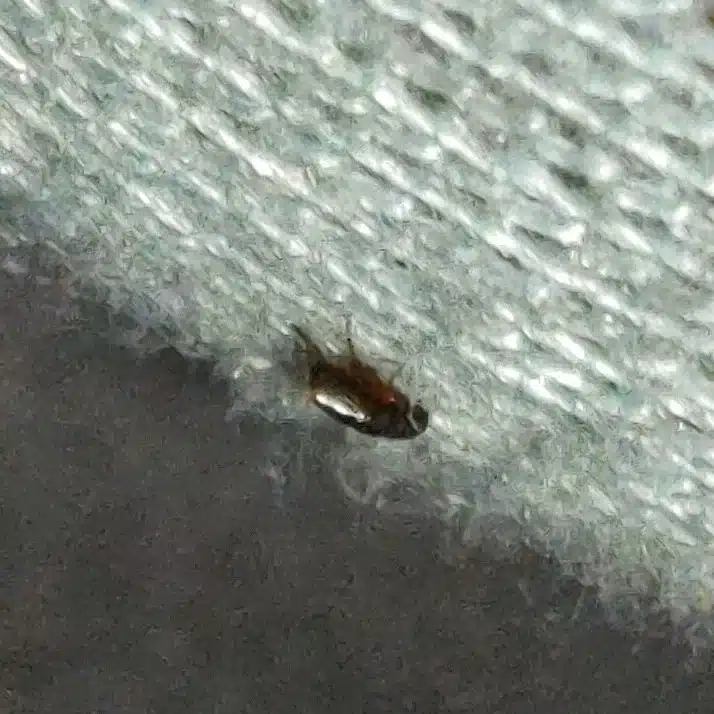Finding fleas in your house can be frustrating and overwhelming. These tiny jumping insects multiply quickly and can turn a small problem into a major infestation within weeks. After working as a registered technician for four years and seeing countless flea issues throughout the DMV area, I’ve learned that success comes down to understanding their life cycle and attacking the problem from multiple angles.
The key to eliminating fleas permanently is treating both your pets and your home environment at the same time. Many homeowners make the mistake of only focusing on one area, which allows the problem to bounce back and forth. This comprehensive guide will walk you through proven methods to get rid of fleas in your house, from immediate DIY solutions to long-term professional treatments.
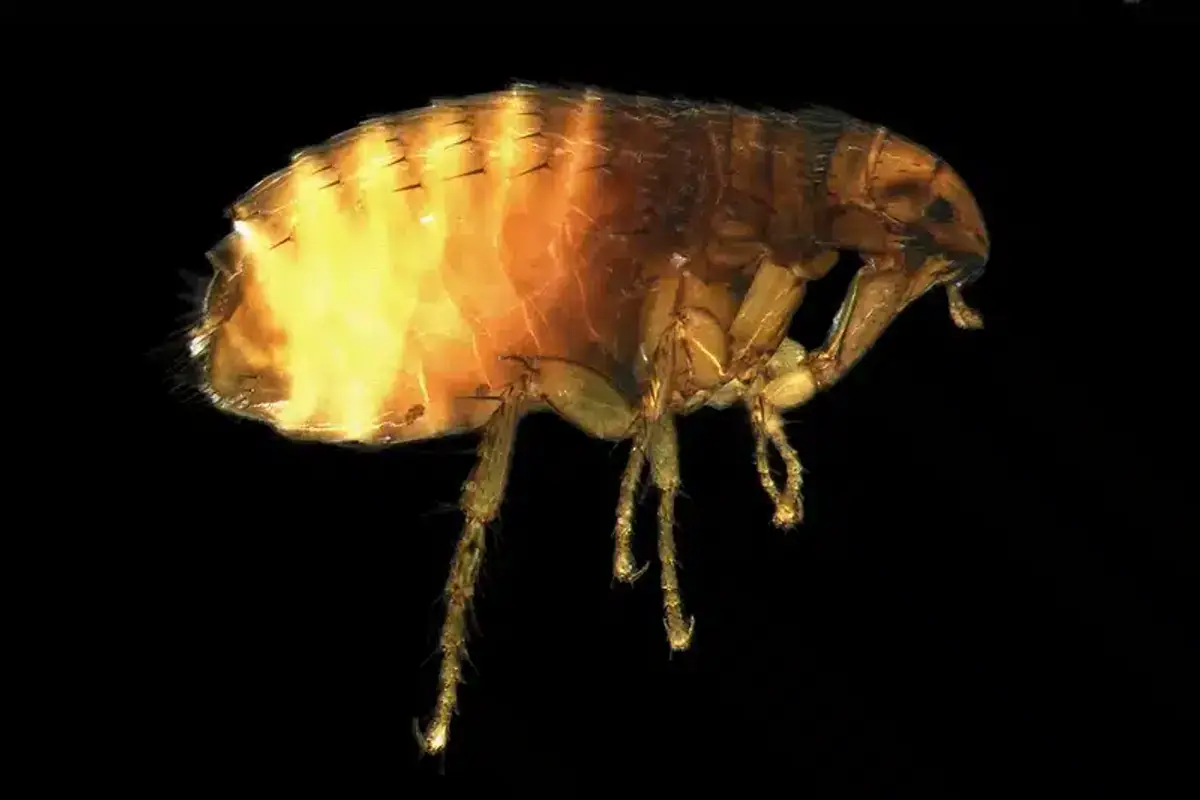
Understanding Your Flea Infestation
Before diving into treatment methods, it’s important to understand what you’re dealing with. The most common indoor flea is the cat flea (Ctenocephalides felis), which actually infests both cats and dogs despite its name. These persistent pests go through four life stages: egg, larva, pupa, and adult.
Adult fleas spend most of their time on your pets, but they lay eggs that fall off into carpets, upholstery, and cracks in floors. At 75°F with 70% humidity, the complete life cycle takes about 30 days. However, pupae can remain dormant for months until they detect warmth, vibration, or carbon dioxide - which explains why flea problems sometimes seem to appear suddenly.
In our Mid-Atlantic climate, fleas can survive year-round indoors even when outdoor populations drop during winter. The humid summers and leaf-littered yards common in Virginia, Maryland, and DC create perfect conditions for larval development outside, while heated homes provide ideal indoor environments.
Confirming You Have a Flea Infestation
Many homeowners confuse fleas with other small insects, so proper identification is crucial. Look for these telltale signs of a flea infestation:
- Bite patterns on humans - typically around ankles and lower legs in clusters
- Flea dirt on pets - small black specks that turn reddish-brown when moistened
- Excessive scratching - pets may develop flea allergy dermatitis
- Visible jumping insects - especially on light-colored surfaces
Try the white sock test: walk around your house wearing white socks, especially in areas where pets spend time. Fleas will jump onto the socks and be clearly visible against the white fabric. Additionally, you can vacuum suspected areas and examine the contents for small, dark moving specks.
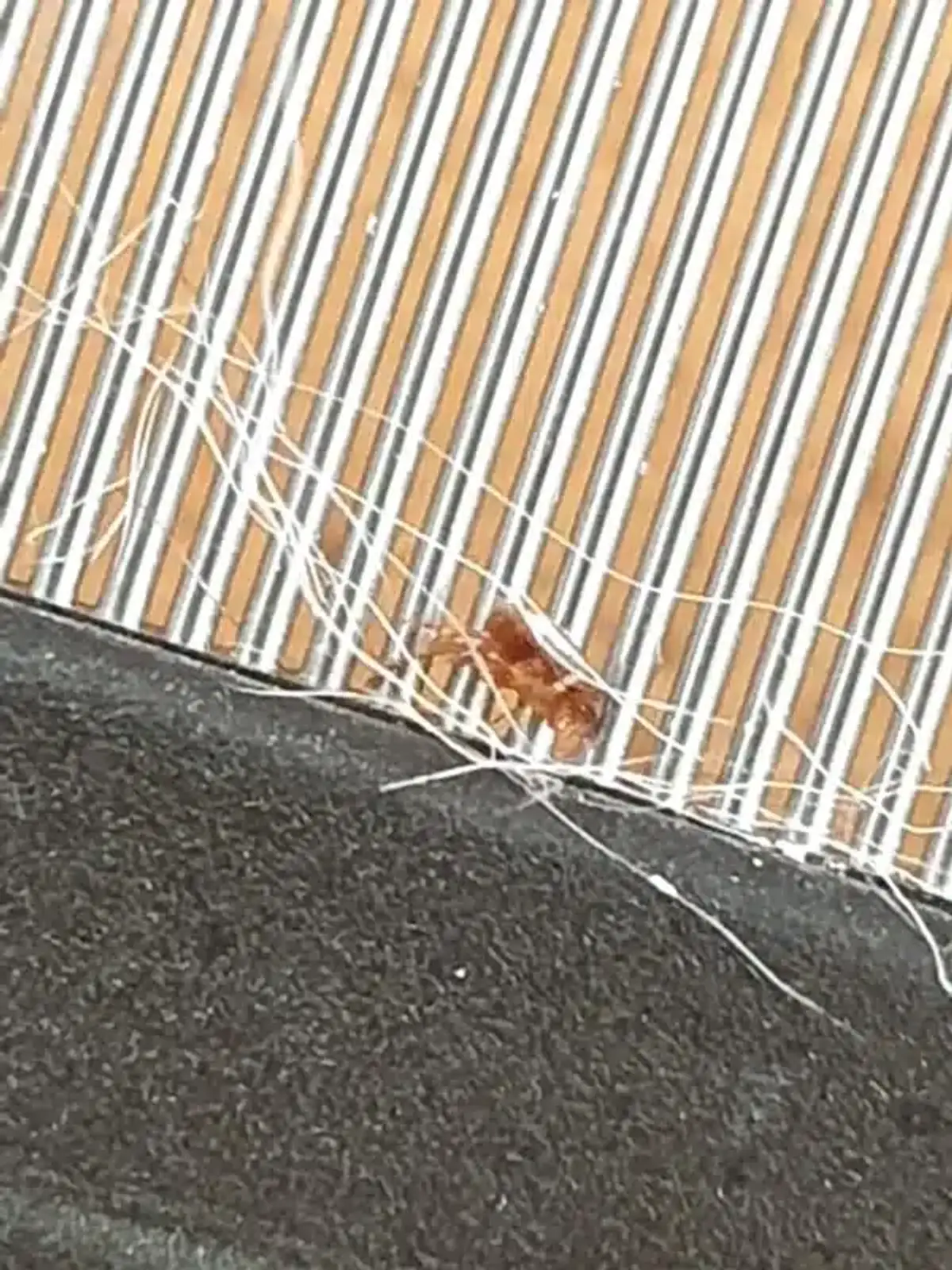
Immediate DIY Flea Control Methods
When you discover fleas in your house, quick action prevents the problem from exploding. These immediate steps can provide relief while you plan longer-term solutions.
How to Treat Fleas on Your Pet - All Animals Simultaneously
The most critical step is treating every animal in your household at the same time. Fleas easily jump between pets, so treating just one allows the problem to continue. Contact your veterinarian immediately for prescription flea treatments like isoxazoline or spinosad oral tablets.
While waiting for your vet appointment, use a fine-toothed flea comb on your pets, focusing on the neck and tail areas where fleas concentrate. According to the EPA, drowning captured fleas in soapy water prevents them from jumping back onto your pet.
Intensive Vacuuming Strategy
Vacuuming is your most powerful immediate weapon against fleas. The vibration and suction kill adults while removing eggs and larvae from carpets and upholstery. Focus on these high-priority areas:
- Pet sleeping and resting areas
- Under furniture cushions and beds
- Along baseboards and carpet edges
- Cracks between floorboards
- Upholstered furniture, especially where pets sit
Vacuum daily for 10-14 days minimum. The University of Maryland Extension recommends immediately sealing and discarding vacuum bags or emptying bagless canisters outside to prevent fleas from escaping back into your home.
Steam Cleaning Treatment
Steam cleaning kills all flea life stages when the temperature exceeds 150°F. Rent or purchase a steam cleaner and treat all carpeted areas, paying special attention to pet areas. The combination of heat and moisture penetrates deep into carpet fibers where flea eggs and larvae hide.
Follow up steam cleaning with thorough drying, as excess moisture can create conditions favorable for flea development. Use fans and dehumidifiers to speed the drying process.
| DIY Methods | Professional Treatment | |
|---|---|---|
| Timeline to Results | 6-10 weeks | 4-6 weeks |
| Success Rate | 60-75% | 85-95% |
| Daily Effort Required | High (1-2 hours) | Minimal |
| Cost Range | $50-200 | $200-500 |
| Best For | Minor infestations | Severe infestations |
Professional Flea Treatment Options
When DIY methods aren’t providing adequate control, professional treatment becomes necessary. Our family business has been serving the DMV area for over 50 years, and we’ve refined our approach based on local conditions and flea behavior patterns.

Integrated Growth Regulator Applications
Professional treatments typically combine adult-killing insecticides with insect growth regulators (IGRs) like pyriproxyfen or methoprene. These advanced formulations provide both immediate knockdown of adult fleas and long-term population control.
What does the science say?
According to peer-reviewed research published in veterinary journals, pyriproxyfen treatments can achieve 88% flea-free results within six months when properly applied. The study found that IGRs are significantly more effective than adult-only treatments because they disrupt the flea reproductive cycle, preventing larvae from developing into breeding adults.
IGRs work by disrupting the flea reproductive cycle, preventing larvae from developing into adults. This breaks the infestation cycle and provides long-term control that vacuuming and adult-only treatments cannot achieve.
Targeted Interior Applications
Professional technicians focus treatment on areas where fleas actually develop rather than spraying entire rooms unnecessarily. We spot-treat carpeted areas, pet bedding zones, and cracks where flea eggs accumulate. This targeted approach maximizes effectiveness while minimizing chemical exposure.
Our research team has removed nine of the harshest chemicals commonly used in pest control, choosing alternatives like Essentria and other reduced-risk products. These materials provide effective control while being gentler on your family and pets.
Case Study: When DIY Methods Failed - A Professional Success Story
During my four years as a registered technician, one case in Arlington stands out as a perfect example of why understanding flea biology matters. The homeowners had been battling fleas for three months using store-bought sprays and foggers, but the problem kept getting worse.
- Initial DIY attempts: Multiple rounds of flea bombs and pet shampoos over 12 weeks
- The problem: No growth regulator was being used - adult fleas died but eggs kept hatching
- Our approach: Targeted IGR application to carpeted areas plus pet treatment coordination
- Result: 90% reduction in flea activity within 2 weeks, complete elimination by week 6
This case taught me that homeowner persistence with the wrong approach often makes problems worse. Professional treatment with the right chemistry and timing makes all the difference.
Exterior and Structural Approaches
How to get rid of fleas in house often requires addressing outdoor sources that continuously reintroduce the problem. Wildlife like raccoons, opossums, and squirrels commonly carry fleas in Mid-Atlantic suburbs and can deposit eggs in your yard.
Landscape Modifications
Simple yard maintenance significantly reduces flea breeding sites by eliminating the conditions fleas need to reproduce outdoors.
What does the science say?
The Centers for Disease Control emphasizes that UV light exposure is lethal to flea larvae, which is why maintaining short grass and pruning shrubs to increase sunlight penetration is so effective. Research shows that flea larvae cannot survive more than 4-6 hours of direct sunlight, making regular yard maintenance a scientifically-proven prevention method.
Remove leaf litter and organic debris where flea larvae feed and develop. In our area’s humid climate, these shaded, moist areas become flea nurseries if left undisturbed. Additionally, eliminate standing water sources that increase humidity levels favorable to flea development.
Wildlife Exclusion
Preventing wildlife access to your property reduces the source of new flea introductions. Screen attic vents, seal entry points under decks, and remove food sources that attract raccoons and opossums. For comprehensive wildlife management, check out our guide on detecting mice in walls and controlling rats in attics, as rodents can also carry fleas.
Focus exclusion efforts around areas where pets spend time outdoors. Dog runs, kennel areas, and favorite pet resting spots should be kept clear of wildlife attractants and potential harborage sites.
Long-Term Flea Prevention Strategies
Successfully eliminating fleas requires ongoing prevention to stop reinfestations. After dealing with hundreds of flea cases across Virginia, Maryland, and DC, I’ve seen that homeowners who maintain consistent prevention rarely face repeat problems.
How to Prevent Fleas on Your Pet Year-Round
The most important prevention step is maintaining your pets on veterinarian-approved flea preventatives year-round. Many homeowners make the mistake of stopping treatments after the first hard frost, but indoor flea populations continue developing regardless of outdoor temperatures.
University of Kentucky research emphasizes that consistent flea prevention on pets eliminates the need for most environmental treatments. Modern flea preventatives not only kill adult fleas but also contain IGRs that prevent egg development.
Regular Maintenance Schedule
Establish a routine cleaning schedule that disrupts flea development before populations can establish. Vacuum carpeted areas weekly, paying attention to pet areas and furniture. Wash pet bedding in hot water (130°F minimum) every two weeks.
Essential Flea Prevention Maintenance
- Weekly Tasks: Vacuum all carpeted areas, especially pet zones and under furniture
- Bi-weekly Tasks: Wash all pet bedding in hot water (130°F minimum)
- Monthly Tasks: Flea comb all pets and perform white sock tests in carpeted areas
- Seasonal Tasks: Professional carpet deep-cleaning before and after peak flea season
- Year-round: Maintain veterinarian-approved flea preventatives on all pets
Deep-clean carpets seasonally, especially before and after peak flea season. Spring cleaning removes overwintering flea eggs, while fall treatments prepare your home for the period when outdoor fleas seek indoor shelter.
Environmental Monitoring
Learn to recognize early warning signs of flea activity before infestations develop. Monthly flea combing of pets, periodic white sock tests, and attention to pet scratching behavior help catch problems early when they’re easier to control.
Pay special attention after vacations or periods when your home was unoccupied. Emerging adult fleas that have been waiting in the pupal stage may all emerge at once when warmth and vibration return to the house.
How to Get Rid of Fleas in Your Home Naturally
Many homeowners prefer to start with non-chemical approaches before considering pesticide treatments. While these methods require more persistence, they can be effective components of an integrated flea management program.
Diatomaceous Earth Applications
Food-grade diatomaceous earth damages flea exoskeletons and causes dehydration. Sprinkle thin layers on carpets, let sit for several hours, then vacuum thoroughly. Repeat weekly for a month to catch newly emerging fleas.
Use only food-grade diatomaceous earth, as pool-grade versions contain chemicals harmful to pets and humans. Always wear a dust mask during application and keep pets out of treated areas until vacuuming is complete.
Temperature Control Methods
Extreme temperatures kill fleas at all life stages. Wash infested bedding and fabrics in hot water (≥140°F) or place items in the dryer on high heat for 40 minutes. For items that can’t be washed, freezing for 24 hours also kills fleas.
Steam cleaning remains one of the most effective chemical-free treatments for carpets and upholstery. The combination of heat and moisture penetrates deep into fibers where chemical sprays might not reach.
Addressing Flea-Related Health Concerns
Fleas aren’t just a nuisance - they can pose legitimate health risks to both humans and pets. Understanding these risks helps prioritize treatment and prevention efforts.
Disease Transmission Risks
While serious disease transmission is relatively rare, fleas can pose legitimate health risks beyond simple bite irritation.
What does the science say?
According to the Centers for Disease Control, fleas can transmit Bartonella henselae (the cause of cat-scratch disease), which affects approximately 12,000 people annually in the US. While rare in modern times, fleas historically transmitted plague bacteria and can still carry murine typhus in certain geographic regions. The medical literature also documents cases of severe anemia in pets from heavy flea infestations, particularly in young animals.
More commonly, fleas cause flea-bite dermatitis in humans and flea allergy dermatitis in pets. Severe infestations can lead to anemia, particularly in young animals, due to blood loss from heavy flea feeding.
Managing Allergic Reactions
Some people and pets develop severe allergic reactions to flea saliva. Watch for signs of excessive scratching, hair loss, or skin irritation in pets. Humans may experience persistent itching, swelling, or secondary infections from scratching flea bites.
If allergic reactions occur, focus on rapid elimination of the flea population rather than trying to treat symptoms alone. Consult with veterinarians for pets and physicians for humans if reactions are severe or persistent.
When to Call Professional Pest Control
While many flea problems can be managed with DIY methods, certain situations require professional intervention to achieve effective control.
Signs You Need Professional Help
Consider professional treatment when DIY efforts haven’t provided results after 3-4 weeks of consistent application. Additionally, homes with severe infestations, multiple pets, or residents with flea allergies benefit from professional-grade treatments and expertise.
Properties with wildlife issues, such as rodent problems or regular raccoon visitors, often need integrated pest management approaches that address both the immediate flea problem and the sources of reintroduction.
What Professional Treatment Includes
Our comprehensive flea treatment begins with a detailed inspection to identify the scope of the infestation and contributing factors. We treat both interior and exterior areas as needed, using targeted applications rather than broad spraying.
Professional treatment typically includes follow-up visits to monitor progress and retreat as necessary. We also provide guidance on pet treatment coordination and environmental modifications to prevent reinfestations. To understand treatment timelines, check our guide on how long pest control takes to work.
Special Situations and Considerations
Certain flea scenarios require modified approaches based on specific circumstances or household needs.
Homes Without Pets
Finding fleas in houses without pets usually indicates a wildlife source. Check attics, crawl spaces, and areas under porches for signs of animal activity. Raccoons, opossums, and even mice can introduce fleas that then infest the living areas.
Treatment focuses on identifying and excluding the wildlife source while treating the indoor environment for existing fleas. These situations often resolve more quickly once the source is eliminated since there are no pets to sustain the flea population.
Multi-Unit Housing
Apartment buildings and condominiums present unique challenges because fleas can move between units through shared walls or common areas. Coordinate with neighbors and property management to treat affected units simultaneously.
Focus on sealing gaps between units and treating common areas like hallways where pets may spend time. Success requires building-wide cooperation rather than individual unit treatment alone.
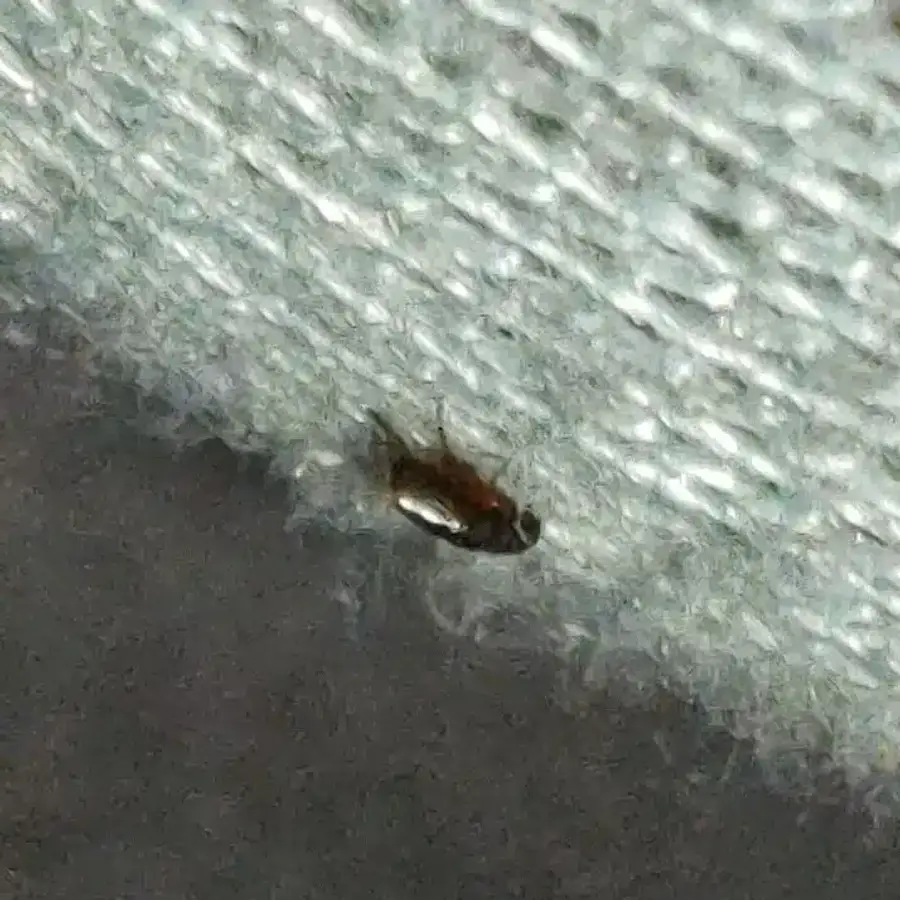
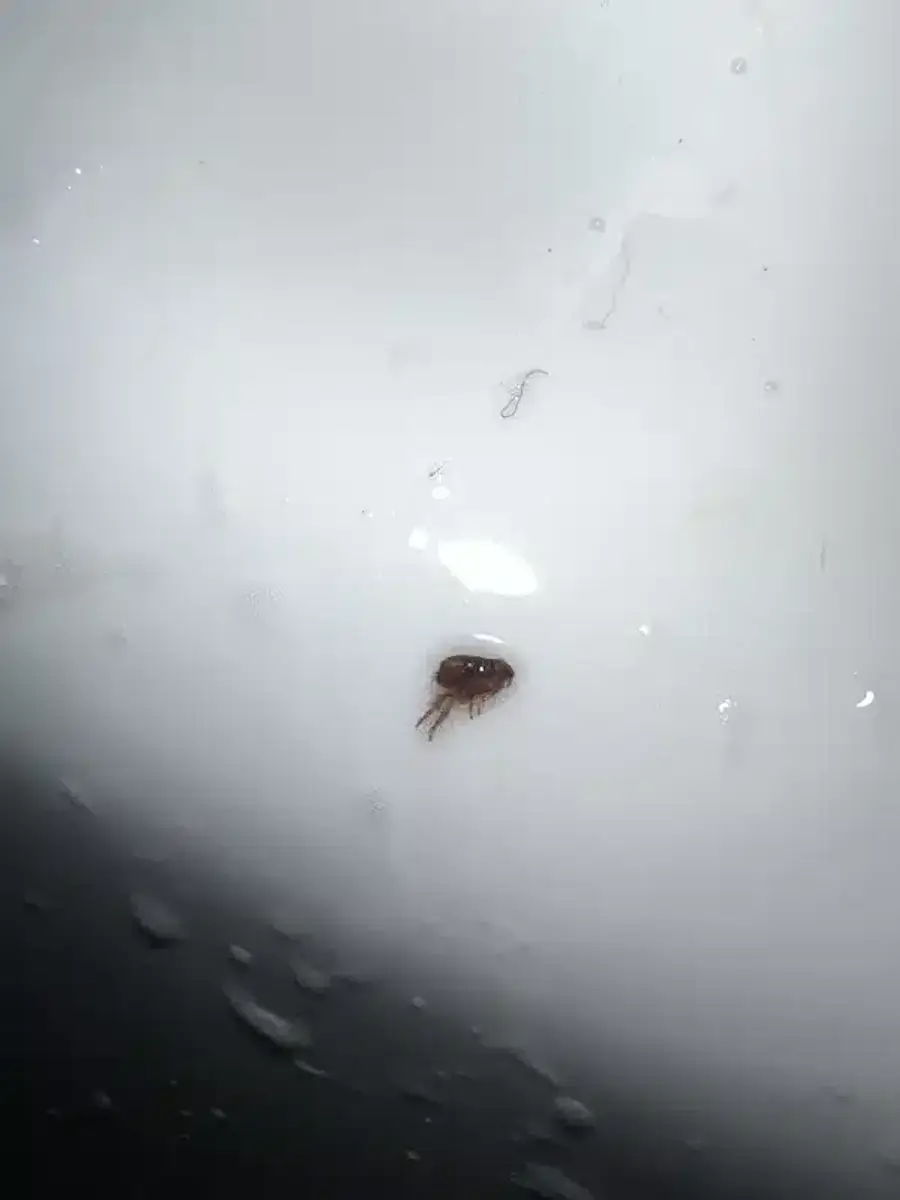
Carpet-Specific Flea Treatment
Carpeted areas require special attention because they provide ideal conditions for flea egg and larval development. The fibers trap organic debris that larvae feed on while providing protection from cleaning efforts.
For detailed carpet treatment strategies, refer to our comprehensive guides on removing fleas from carpet and comparing chemical vs natural carpet treatments. These resources provide specific techniques for different carpet types and severity levels.
Regular carpet maintenance prevents most flea problems from establishing. Weekly vacuuming with attention to pet areas, combined with seasonal deep cleaning, eliminates the organic matter that sustains flea larvae.
Seasonal Treatment Considerations
Understanding seasonal flea patterns in the Mid-Atlantic region helps time treatments for maximum effectiveness and prevents problems before they start.
Spring Prevention Strategies
Begin prevention efforts in March before outdoor flea populations become active. This is the ideal time for yard cleanup, removing leaf litter and organic debris that accumulated over winter. Early-season treatments catch problems while they’re small and easier to control.
Restart aggressive flea prevention on pets if you reduced treatments during winter. Veterinary-grade preventatives work best when maintained consistently rather than started after problems develop.
Summer Peak Management
Our humid summers create perfect conditions for flea development both indoors and outdoors. Increase cleaning frequency during peak season and monitor pets more closely for signs of flea activity.
Consider professional perimeter treatments for homes with pets that spend significant time outdoors. For comprehensive seasonal pest management, learn about our optimal spray schedules that address multiple pests throughout the year.
Treatment Success Monitoring
Knowing how to evaluate treatment effectiveness helps you adjust your approach and determines when the flea problem is truly resolved.
Monitor flea populations using the same detection methods you used for initial identification. Weekly white sock tests, pet combing, and visual inspections provide objective measures of progress. Successful treatment typically shows dramatic reduction in adult fleas within 1-2 weeks, followed by gradual elimination over 4-6 weeks as remaining eggs and larvae complete their development.
Document your progress with photos or notes about flea activity levels. This helps you recognize when treatments are working and provides valuable information if professional help becomes necessary.
Getting rid of fleas in your house requires persistence and a comprehensive approach, but the effort pays off with long-term relief. By combining immediate control measures with ongoing prevention, you can eliminate current infestations and prevent future problems. Remember that successful flea control treats both your pets and your environment simultaneously - focusing on just one area allows the problem to continue.
If you’re struggling with a persistent flea problem or want professional guidance tailored to your specific situation, don’t hesitate to reach out. Our registered technicians have decades of experience helping DMV area homeowners achieve lasting flea control. Call us at 703-683-2000 or email us at info@bettertermite.com for a detailed consultation and treatment plan designed for your home’s unique needs.
Frequently Asked Questions
The answers below reflect the most common flea questions we hear from homeowners.
How long does it take to get rid of fleas in a house completely?
+
Complete flea elimination typically takes 4-8 weeks with consistent treatment. You'll see dramatic reduction in adult fleas within 1-2 weeks, but eggs and larvae already in your carpets need time to complete their development and contact treatments. The key is maintaining daily vacuuming and treating all pets simultaneously during this period.
Can fleas live in a house without pets?
+
Yes, fleas can survive in houses without pets for several weeks by feeding on human blood, though they prefer animal hosts. More commonly, fleas in pet-free homes indicate a wildlife source like mice, raccoons, or other animals that may be accessing your attic, crawl space, or outdoor areas near your home.
What kills fleas instantly in carpet?
+
Steam cleaning at temperatures above 150°F kills fleas instantly at all life stages in carpet. Vacuuming also provides immediate results by physically removing fleas, though some may survive the process. Professional-grade contact sprays kill adults on contact, but won't affect eggs and larvae deep in carpet fibers.
Do I need to treat my yard if I have fleas indoors?
+
Yard treatment is necessary if your pets spend significant time outdoors or if you have wildlife bringing fleas onto your property. However, if your pets remain primarily indoors and you address the wildlife sources, yard treatment may not be needed. Focus on consistent pet prevention and indoor environmental control first.
Why do I still see fleas after professional treatment?
+
Seeing fleas for 2-4 weeks after professional treatment is normal because eggs and pupae already in your home continue developing into adults. These newly emerged fleas quickly die when they contact treated surfaces. If you see fleas beyond 6 weeks post-treatment, contact your pest control provider for follow-up service.
Can fleas make humans sick?
+
While serious disease transmission is uncommon, fleas can carry Bartonella (cat-scratch disease), murine typhus, and in rare cases, plague bacteria. More commonly, people experience flea-bite dermatitis with persistent itching and potential secondary infections from scratching. Some individuals develop severe allergic reactions to flea saliva.
What's the difference between flea dirt and regular dirt?
+
Flea dirt consists of digested blood that fleas excrete, appearing as small black specks on your pet's fur. Unlike regular dirt, flea dirt turns reddish-brown when moistened with water due to the blood content. Finding flea dirt confirms active flea feeding and indicates your pet needs immediate treatment.
Should I throw away my vacuum bag after vacuuming fleas?
+
Yes, immediately seal and dispose of vacuum bags or empty bagless canisters outside after vacuuming fleas. Some fleas survive the vacuuming process and can escape back into your home. Adding a small amount of flea powder or diatomaceous earth to the bag before vacuuming helps kill captured fleas.
With five years of hands-on experience in the pest control industry, George Schulz is a registered technician with the Virginia Pest Management Association and a proud third-generation professional in a family business that's been protecting homes for over 57 years. He manages and trains a team of service pros while also leading internal research efforts—recently spearheading a deep-dive review of thousands of documents on pest control materials to hand-pick the most kid and pet friendly, most effective solutions tailored specifically for homes in the DC metro area.
